WRITING ABOUT WHAT YOU DON’T KNOW
New writers are often advised to ‘write what you know’. Which I totally did for my first novel THE DAUGHTER, setting it in North London where I live, and featuring a self-doubting protagonist, who was eerily like me! But for my second novel THE SAVED, I decided to push myself way out of my comfort zone and write about a subject and a place that I knew absolutely nothing about.
The subject was the medical phenomenon that you can survive being clinically dead for up to 6 hours if your body temperature is drastically cold. So I needed to set this plot in a very cold place, but English speaking. Winter time off the coast of Scotland, seemed appropriate. But where specifically? Online research is amazing, but you can’t properly experience the sights, sounds, smells, tastes and feel of a place, or really get inspired, through the portal of the internet, however densely pixilated the images are. I had to do my research the old-fashioned way. In person. But I’d never been to the Scottish coast or islands and knew no one connected.
I don’t believe in fate, but fate didn’t care about my dour pragmatism and stepped in. At a writing retreat, I met a novelist called Sarah Clayton (author of The Wrong Daughter), who casually mentioned that she was running a writing workshop on a slate island off the western coast of Scotland. I signed up straight away and was soon on the 7-hour sleeper from London to Glasgow, then the 3 ½ hour local train from Glasgow to Oban, admiring the views and pleased with my seize-the-day approach. But as I waited to meet Sarah at Oban station for our drive to a Scottish island, I realised that I didn’t know her AT ALL and had no proper idea of where I was being taken. This suddenly felt like the beginning of a film and the genre of that film was ‘horror’. As she and her husband Mike chatted during the drive, they didn’t sound like sinister killers. But then don’t sinister characters always seem nice at the beginning of films and you only realise their true natures as they and their cult close in around you in their long robes, while chanting! These thoughts inspired a thread of my plot: lovely strangers who seem perfectly nice at first, but perhaps belong to a sinister cult.
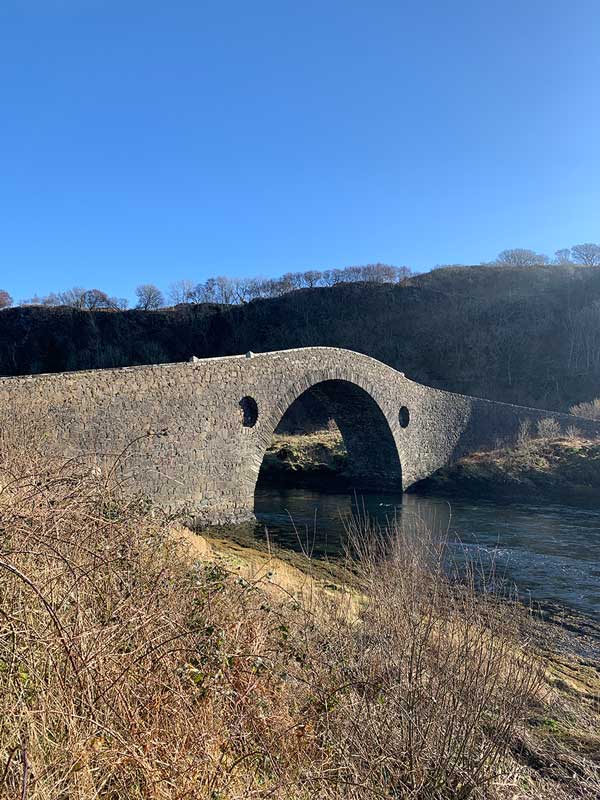
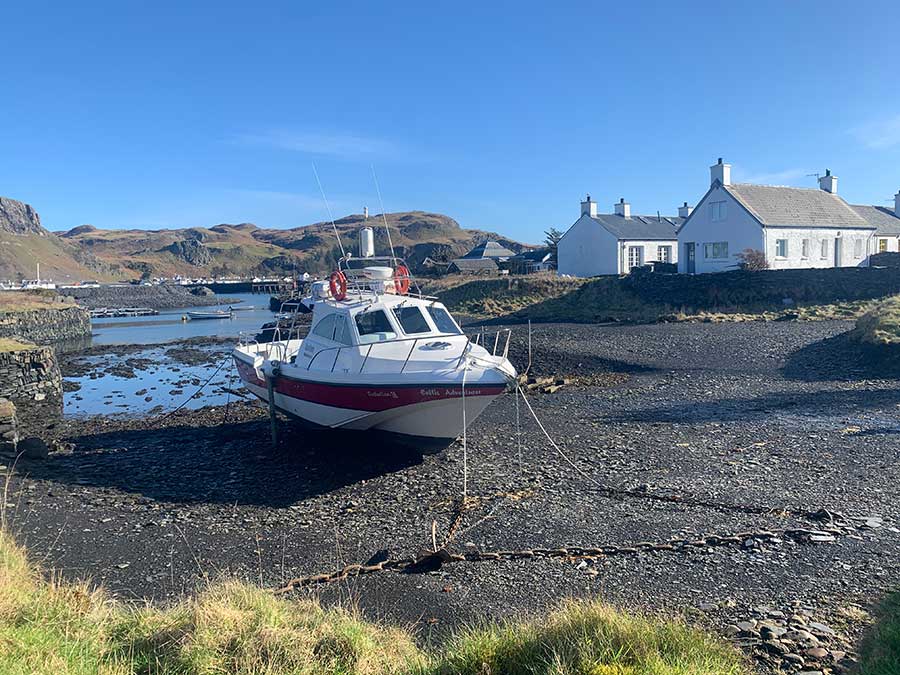
We drove half hour an hour to the Isle of Seil, which is most definitely an island, but has technically been connected to the mainland by the Clachan Bridge since 1792. Apparently, some islanders argued against building it at the time, saying that a bridge would reduce their island status and that no one would know where the young people were. This instantly set my mind whirring about tight knit islanders who don’t want their youths to leave.
We crossed Seil and arrived in the village of Ellenabeich, where we were doing the writing workshop, with its stunning hillside backdrop. Perfect to fall from… The first night, I walked along the rows of white cottages in Ellenabeich and had dinner at the The Oyster Bar. I was amazed at how many of the houses on the island were white one-story cottages with thick walls and small deep windows and how the bar and shop were built into the same cottages. I thought that a builder who did loft conversions would be like a cat among the pigeons here, so gave that job to my returning protagonist Calder. There was something rather odd about most buildings being constructed out of these white cubes. I made Calder’s wife Nancy, feel like a rat being watched to see which building she would scurry into next.
Later in the week, we took the car-ferry from Cuan on the Isle of Seil to the island of Luing and another day we got the local boat to the island of Easdale. These secluded slate islands were ideal for my plotline: stunningly beautiful but hard to reach, freezing cold in winter and with tight knit communities. In the end I decided to make up my own island called Luing, using elements of Seil, Luing and Easdale, partly so that I could make up the specific island terrain I wanted for my plot and partly so that I didn’t offend anyone: there are so few churches, pubs and shops that any comments I made about my fictional characters could appear to be about real people!
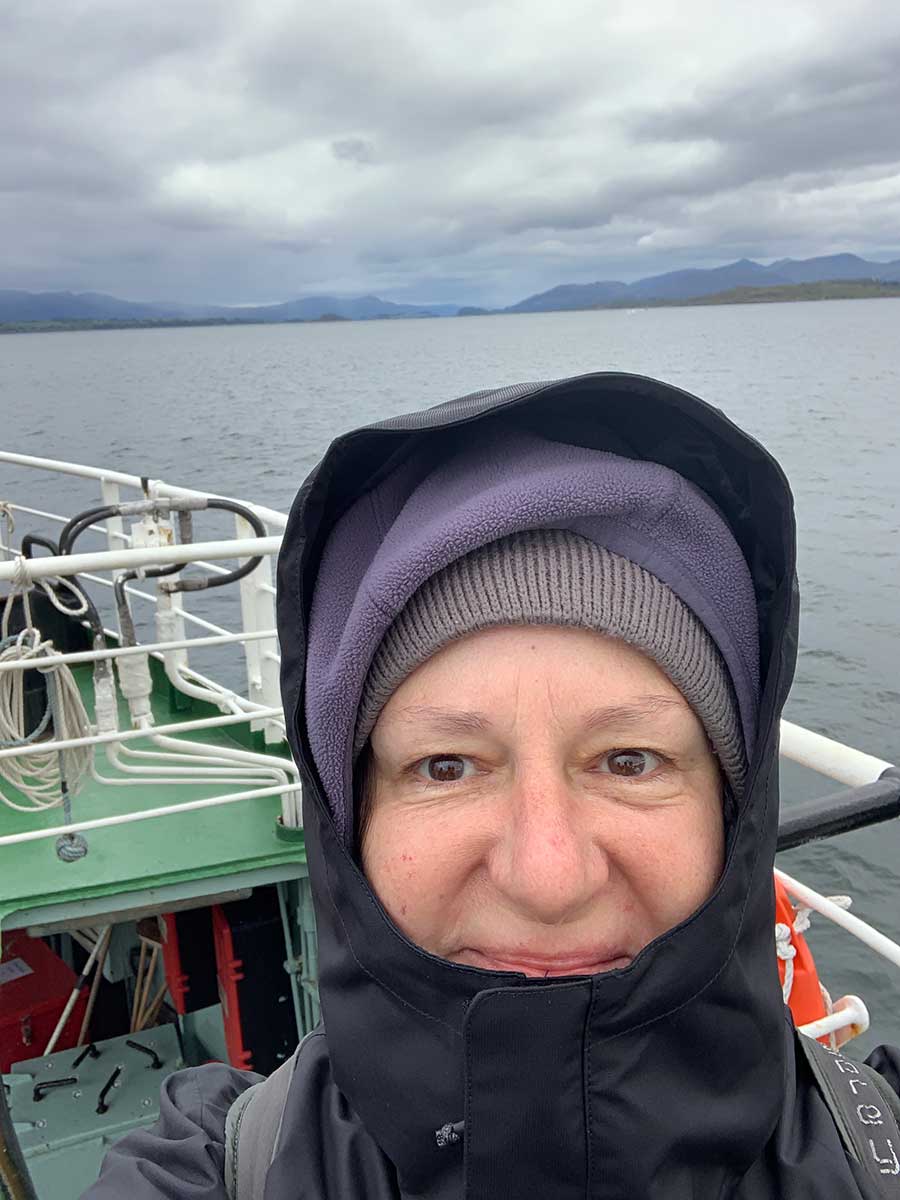
All three islands are slate islands with a stark beauty which was perfect for my atmospheric setting and for use as a metaphor. The slate mining industry closed down there in the 1950’s leaving mysterious water-filled slate pits, old equipment and stunning beaches strewn with slate. I learnt that while slate is a strong substance used for roofs, once it shatters it is hard to put back together as bits sheer off. This was an ideal metaphor for my lead characters Calder and Nancy who thought they had an unbreakable marriage, but as the book progressed secrets would come to the surface which threatened to shatter them irrevocably. The deep water-filled pits and old discarded slate winches were also great metaphors for secrets long hidden finally coming to the surface.
We stayed at the wonderful Garragh Mhor B&B, which I cannot recommend highly enough; we were looked after brilliantly by hosts Jan McSkimming and Darren Ainsworth. Jan is a wonderful cook of healthy delicious food and an intuitive healer, and Darren is an amazingly creative blacksmith. They were both inspiring and knowledgeable about the area. Darren led us on a walk up the hill behind the guest house and at the top was a very narrow path that I was too scared to cross: this was a perfect setting for a scene in which Nancy was forced to cross a dangerous hilltop path to save Calder. I noticed sheep clinging to the steep hill and said it was amazing they didn’t fall, but Darren said that they absolutely did fall sometimes. As I looked down towards the cottage below, I thought that the horror of a sheep falling on the roof would be very useful. Jan lent me a book on homeopathy and I read how slate tincture is used for helping someone get over something that can never be mended. I liked the idea of a character who was a local who was highly intuitive and interested in homeopathy and this gave me the character of Janey, the local shop keeper and homeopath.
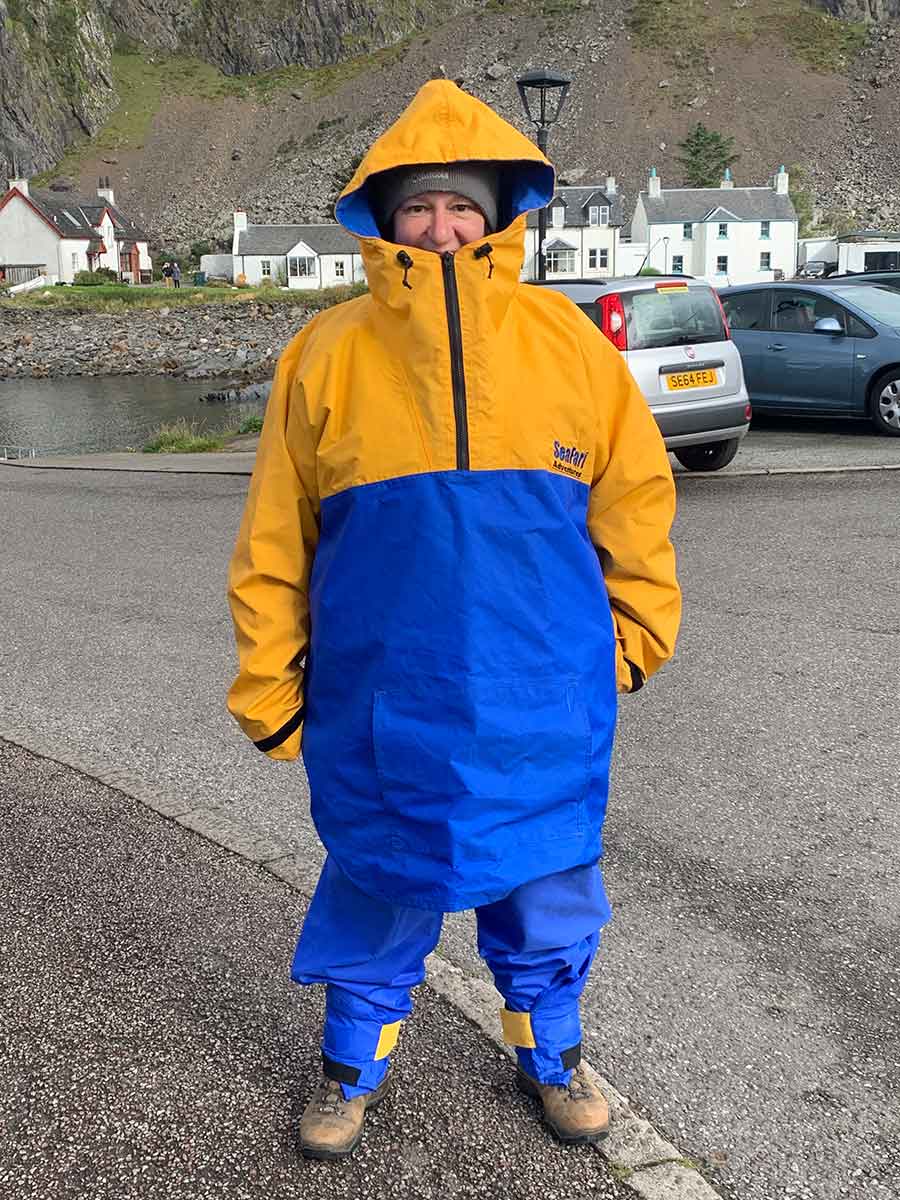
We went on boat trips run by the marvellous Seafari, looking at the island wildlife and the Corryvrecken whirlpools. We were drenched by sea spray out on the choppy water, looked back at the islands from the sea, heard about the wildlife and saw the whirlpools that are created when the tides change, due to an undulation in the sea bed. The whirlpools were a brilliant plot device, for mysterious deaths and have various folk tales associated with them. The boat trip itself was a great scene for the book. In particular the animals worked well as metaphors: the grey and harbour seals who are too different to mate; the sad little shag birds whose feathers don’t have the oils to make them waterproof, so they have to hang in the water with their heads tipped back for safety; and the majestic white-tailed eagle, the ultimate bird of prey, whose courtship involves aerial displays culminating in the male and female locking talons and hurtling to the ground in a death dive.
I visited several small churches on the islands – sometimes set isolated on hills, sometimes in bleak terrain silhouetted against the sky, and always with interesting atmospheric interiors. I definitely didn’t base the sinister old-fashioned church in my book specifically on any of those I saw. But I was inspired by their small size and austerity to imagine my censorious slate decorated church. Hearing about the different brands of Christianity practised in some areas of Scotland, I thought about a priest developing his own particular brand because of his own demons.
Sarah Clayton and her lovely husband Mike turned out not to be killers from a long-robed chanting cult, but wonderful hosts and friends, and I am hugely grateful to both of them for their help with my research. I could not have written my book without them. I highly recommend Sarah’s face to face and online coaching. She teaches ‘The Write Wild Method for Writers’, which uses being in nature to expand and support creativity (https:// write-wild-books.cademy.co.uk/).
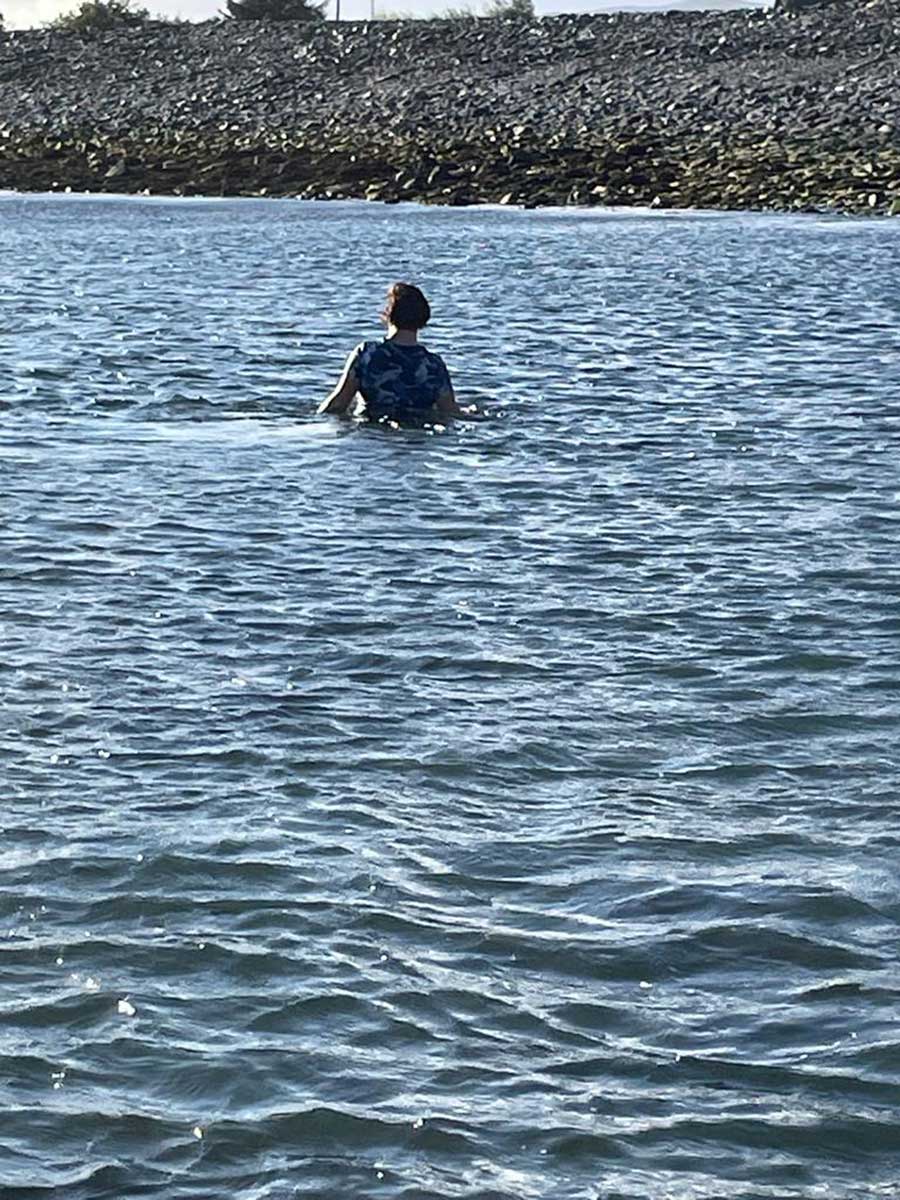
Before I left the islands, I had one last thing I had to do. Since my book is all about someone being submerged in the freezing sea, I had to experience this myself, I trundled down to a deserted beach, pulled off all my clothes and shivered on the slate beach, looking out at the ruffled grey sea, in just my little M&S swimming costume. Then I stepped carefully over the clicking slates to get to the water’s edge. Ooh it was proper cold. But I waded in till I was totally submerged. It was thrilling and scary. I felt utterly alive, everything tingling. I was a tiny thing in this huge deep sea. I ducked under, eyes bulging into the clear freezing water and then burst up to the air to look back at the slate beach. The sea and slate seemed like the liquid and solid states of the same substance. This was a transformative experience. I knew this intense freezing experience would change my main character Calder and that his wife Nancy would constantly wonder what he had experienced out in the freezing sea and be forced to try it for herself.
So much of my plot and its themes came from my first vivid research trip to these slate islands and further details arose during my second trip once I’ve fleshed out the main arc of the plot. I’ve used these islands to create a sense of mystery and suspense in my novel but I hope I’ve also managed to convey the beauty and mystery of these wonderful slate islands to the reader. I whole-heartedly recommend a trip there. Standing on the top of one of the hills looking down on the beautiful islands as the weather shifts and a shaft of light breaks through the clouds, you can feel like you are on top of the world, in a natural cathedral, at some strange nexus point between man and the heavens.
